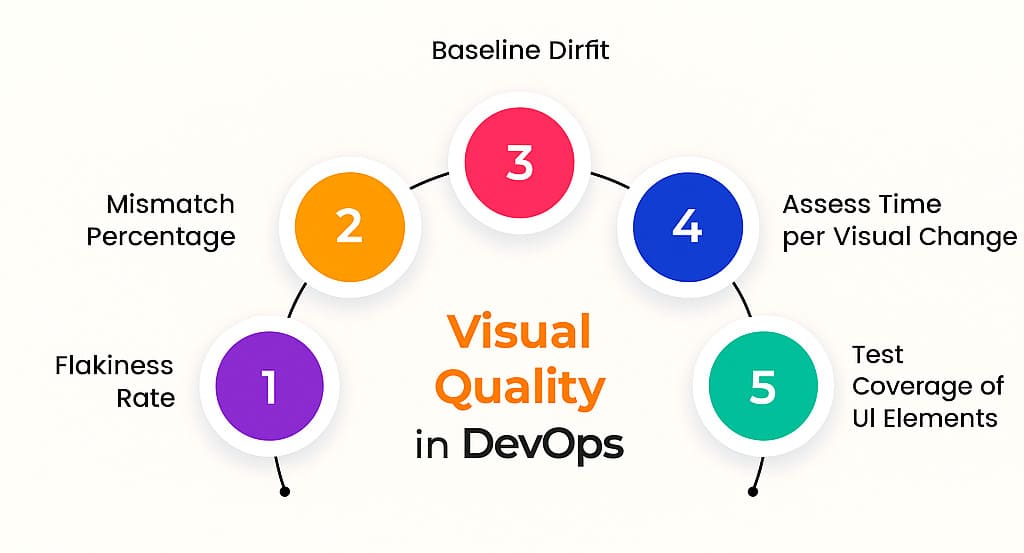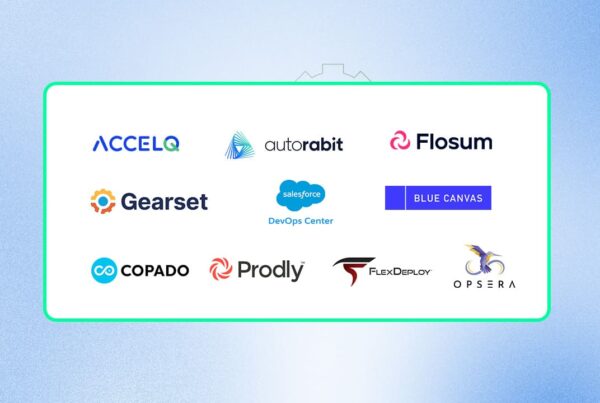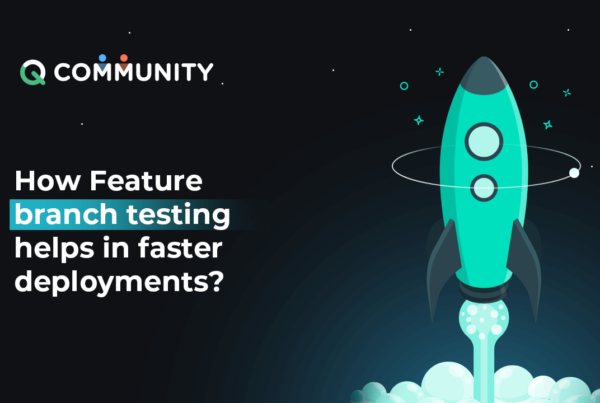Visual Testing in DevOps Pipelines: What Testers Need to Know

As modern QA teams adopt speedy release cycles, confirming User Interface (UI) integrity across contexts has become tricky. Visual testing in DevOps pipelines is useful in this situation. Experts can identify visual regressions before they affect production by integrating automated visual checks into continuous integration and continuous delivery (CI/CD) systems.
Understanding Visual Testing in DevOps
It is an approach in software testing that concentrates on checking the visual accuracy of apps as part of the CI/CD pipeline. Contrasting old-fashioned testing that employs coding logic to scrutinize for functional accuracy, visual testing ensures that the user interface functions as planned across diverse devices, screen sizes, and browsers.
Test Strategy: Choosing What to Validate Visually
In CI/CD workflows, not every User Interface (UI) element needs visual authentication. A robust strategy supports experts in striking a balance between test coverage and speed. There are multiple forms of visual validations to consider:
- Content validation: Checks that strong data, labels, and text appear appropriately and are not overlapped or clipped.
- Layout authentication: Guarantees the structural accuracy of UI components, assessing spacing, alignment, and positioning issues.
- Theme and styling validation: Finds discrepancies in themes, fonts, and colors that might result from design system changes or CSS updates.
- Cross-browser & responsive authorizations: Checks accuracy across diverse web browsers, screen sizes, and machines.
How to Integrate Visual Testing in CI/CD?
Integrating visual testing in CI/CD is critical for maintaining product quality and allowing rapid release cycles, as it ensures UI stability across regular deployments. By focusing on the app’s visual appearance rather than just its functionality, visual QA complements outdated testing techniques in the modern DevOps lifecycle, where automation and speed are crucial.
Where does Visual QA fit?
This kind of testing fits after functional, integration, and unit testing, but before distribution to staging or production environments. This positioning guarantees that all underlying functionality is deep-rooted first, and then the visual facets of the UI are authorized through automated snapshot comparisons. Let us check out how it fits within a CI/CD pipeline:
- Automated Unit and Build Testing: Tools like GitLab CI, Jenkins, and more can effortlessly perform functional & unit testing.
- Code Commit: Experts push modifications to the repository.
- Visual Testing Step: Tools like BackstopJS, AyeSpy, or ACCELQ collect User Interface (UI) snapshots and compare them to a formerly approved baseline.
- Assessment/Approval: If visual distinctions are detected, the pipeline might pause for manual examination or approval before proceeding.
- Staging Delivery: Once tests pass, the app is deployed to a staging environment.
- Production Deployment: After the last validations, the app moves to production.
Why is Visual QA Important in DevOps?
In the advanced DevOps environments, it is easy for minor modifications in UI to slip through unnoticed, particularly during style updates, dependency upgrades, or refactors. Though functional and unit tests guarantee logic and data flow function as projected, they do not notice visual regressions, broken styling, or layout shifts.
Implementing visual testing in CI/CD acts as a safety net to:
- Control unplanned visual variations from reaching production.
- Find pixel-level UI discrepancies.
- Automate UI scrutiny with less manual QA time.
- Handle design reliability across devices and teams.
What is visual shift detection in DevOps?
It mainly refers to the method of detecting unexpected modifications in the appearance, layout, or position of UI components during software updates. Such changes might happen owing to responsive design issues, styling conflicts, or code modifications, and can depressingly impact user experience.
By using automation testing tools, visual shift recognition helps DevOps testing teams find component overlap, spacing errors, and layout misalignments early in the CI/CD pipeline. It plays a crucial role in handling visual consistency across devices and versions.
ACCELQ’s Approach: No-Code Visual Testing with Enterprise-Grade Control
Advanced visual testing tools for DevOps teams are introduced to automate and minimize manual effort and UI authentication, and integrate smoothly into CI/CD pipelines.
Standard Visual Testing Tools for DevOps Teams
| Tool | Key Features | Skill Requirement | CI/CD Integration | Visual Coverage | Best For |
|---|---|---|---|---|---|
| ACCELQ | Codeless visual testing, enterprise controls | Low | Strong | High | Enterprise DevOps |
| Chromatic | Storybook integration, element-level snapshots | Medium | Moderate | Medium | React User Interface (UI) teams |
| Percy | Snapshot tests, GitHub incorporation | Medium | Strong | Medium-High | Agile teams |
ACCELQ’s Distinguished Approach
The pristine platform provides a codeless, AI-centric automated visual testing platform launched for enterprise DevOps teams. Unlike several tools that demand in-depth technical expertise or scripting, ACCELQ enables business and QA teams to define and maintain visual validations through a no-code, intuitive interface.
Core advantages of ACCELQ for visual testing in DevOps pipelines:
- Codeless test generation: Empower non-tech operators to generate and manage visual validations.
- Enterprise-level control: audit trails, compliance-ready reporting, and centralized test management.
- Smooth integration of CI/CD: Native plugins for DevOps, Jenkins, GitHub Actions, and more.
- AI-centric shift recognition: Automatically finds layout drifts & visual anomalies across environments.
- Cross-platform scalability: Test hybrid, mobile, and web apps with consistent visual coverage.
Why Does ACCELQ Stand Out?
It allows for faster release cycles without sacrificing UI quality by bridging the gap between non-tech and tech teams. It reforms how visual testing tools for expert teams can scale in the actual world.
📈 Accelerate Your Testing ROI
Leverage AI-powered automation to reduce testing time by 70%
See It in Action
Metrics That Matter: Measuring Visual Quality in DevOps
What metrics matter most in visual testing for DevOps? This is an important question for experts aiming to track the efficiency and consistency of their visual QA approach. Let us find the key metrics that matter:

1. Flakiness Rate
It tracks how often visual testing fails contradictorily due to browser-centric quirks, animation timing, or rendering delays. A high flakiness rate can remove trust in test outcomes and must prompt efforts to recover snapshot timing or calm test environments.
2. Mismatch Percentage
This metric calculates the percentage of pixels that vary between the current snapshot and the baseline image. A huge disparity percentage typically indicates important UI changes or layout problems. Specialists can establish thresholds to auto-pass minor alterations and flag only meaningful shifts.
3. Baseline Drift
It mainly denotes regular changes or updates to the reference images used for comparison. This might specify test misconfiguration, excessive churn, or unstable UI designs. Assessing drift supports experts in managing accurate and consistent visual baselines over time.
4. Assess Time per Visual Change
This calculates how long it takes a QA reviewer or developer to scrutinize and reject or approve visual changes flagged by the system. Shorter evaluation times often reflect better, clearer, and more tooling diffs.
5. Test Coverage of UI Elements
Knowing how much of the User Interface is being visually tested assists software testing experts in detecting blind spots. This can be traced as a percentage of elements, pages, or customer journeys covered by visual tests.
What is visual shift detection in DevOps?
It is the usage of tools to detect unintentional changes in the visual hierarchy, position, or layout of UI elements during app updates. As UI intricacy grows and responsive design becomes normal, even minor DOM or CSS updates can produce subtle but impactful layout changes, often missed by old form testing.
Conclusion
Visual testing isn’t just optional in the DevOps pipelines; it is critical for detecting layout regressions, guaranteeing UI consistency, and managing a top-quality user experience across devices. With no-code platforms such as ACCELQ, even non-tech teams can easily take ownership of visual QA without decreasing release time.
To discover how your team can restructure visual testing with enterprise-grade control, browse the ACCELQ contact us page for a consultation or demo.
You Might Also Like:
 What Is Regression Testing In Agile?
What Is Regression Testing In Agile?
What Is Regression Testing In Agile?
 Top 10 Salesforce DevOps Tools
Top 10 Salesforce DevOps Tools
Top 10 Salesforce DevOps Tools
 How Feature branch testing helps in faster deployments
How Feature branch testing helps in faster deployments
































